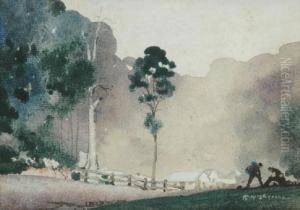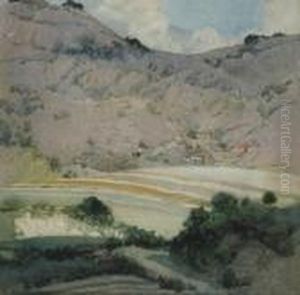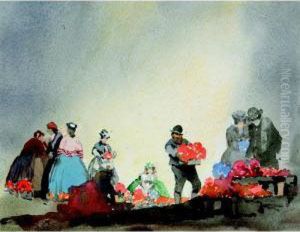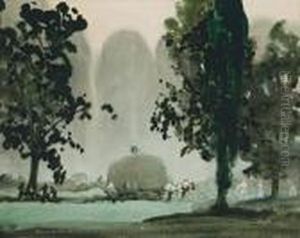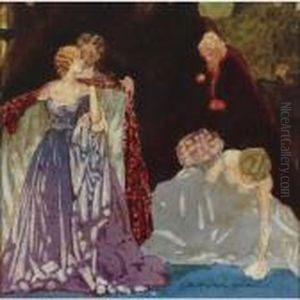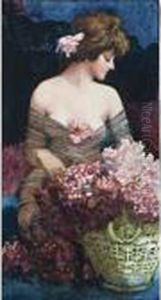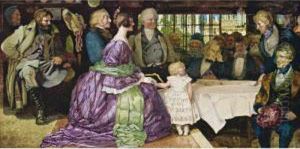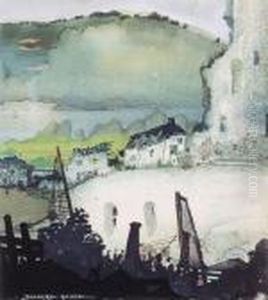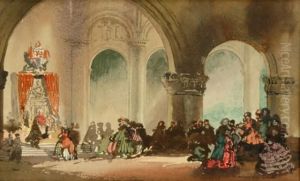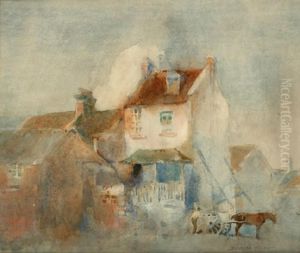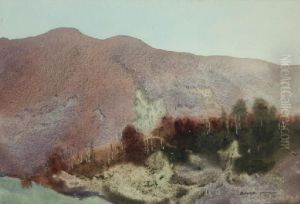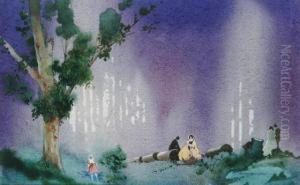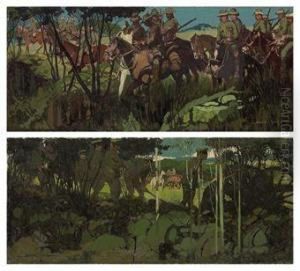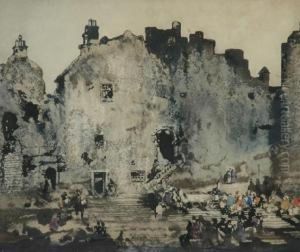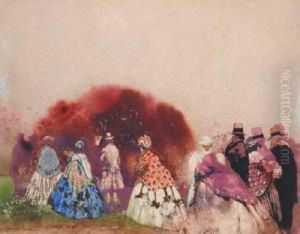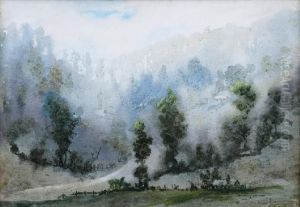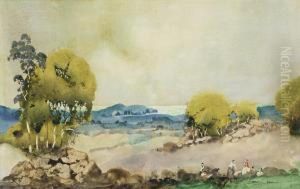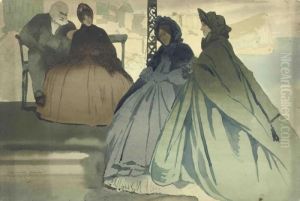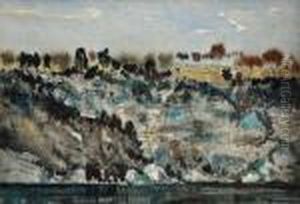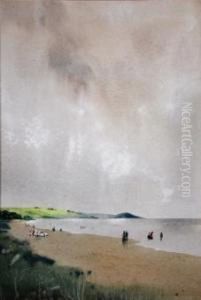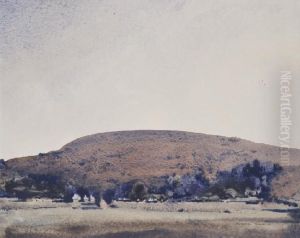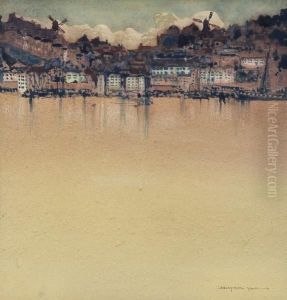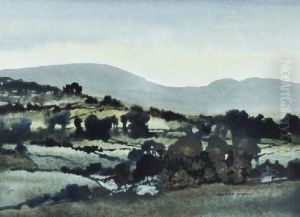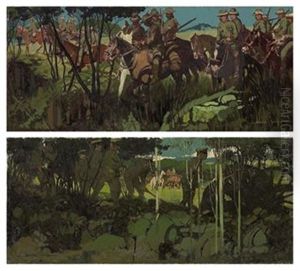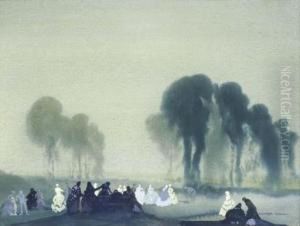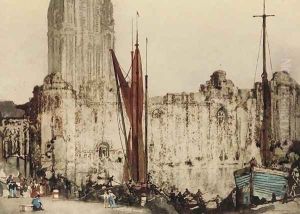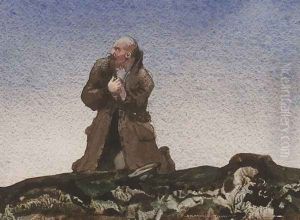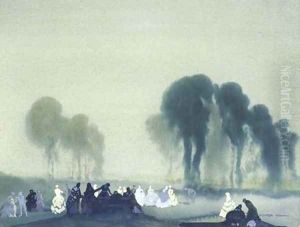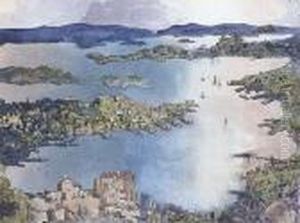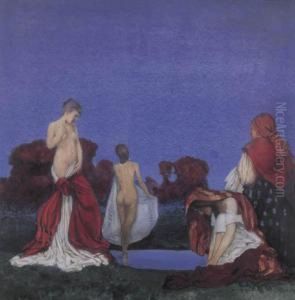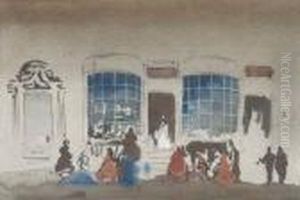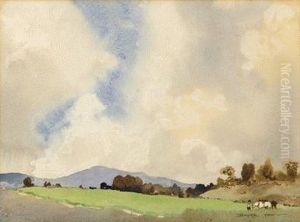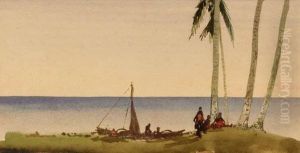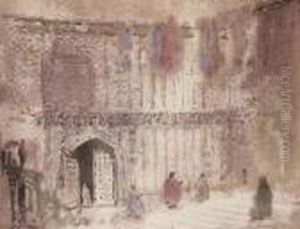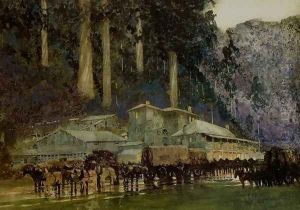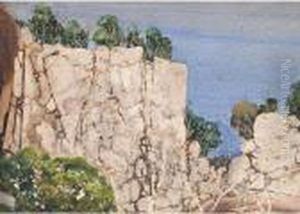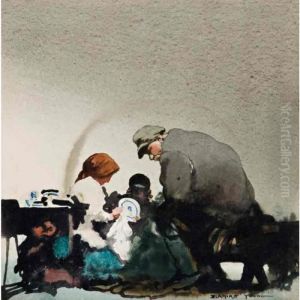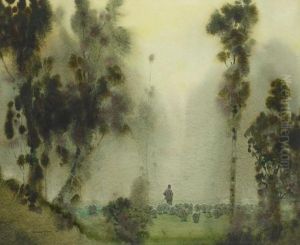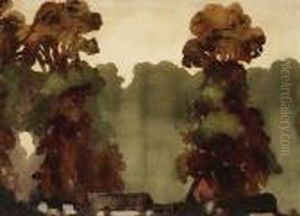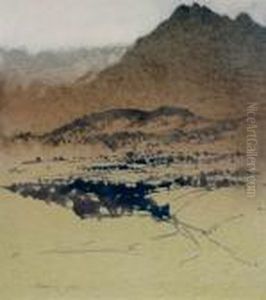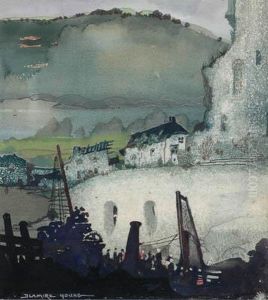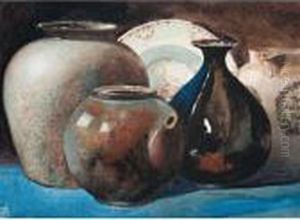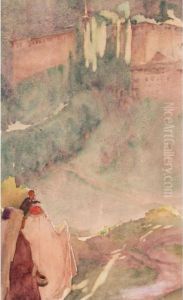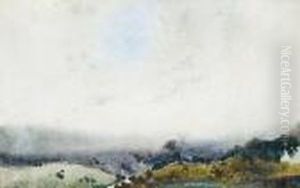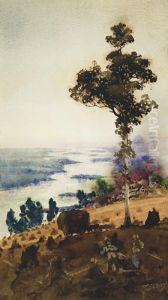William Blamire Young Paintings
William Blamire Young, born on 9 August 1862 in Londesborough, England, was a significant Australian watercolourist with a distinctive style that contributed to the development of Australian art in the early 20th century. He was educated at the Royal Grammar School, Newcastle upon Tyne, and later at Durham School. He originally pursued a career in the British civil service, but his passion for art led him to abandon this path.
In 1884, Young moved to Australia for health reasons and settled in Melbourne. He worked in various clerical positions before dedicating himself to art full-time. His early Australian works were mainly conventional landscapes. However, he soon developed a more personal style characterized by broad, sweeping lines and a bright palette influenced by the Heidelberg School, an Australian art movement known for its impressionistic approach to the Australian landscape.
Young's work evolved after studying under Frederick McCubbin and attending the National Gallery School in Melbourne. He began to experiment with watercolour, which became his preferred medium. By the early 20th century, Young established himself as a prominent watercolourist, noted for his ability to capture the unique light and atmosphere of the Australian bush. His paintings often portrayed rural and coastal scenes, with a particular focus on the effects of sunlight and shadow.
Aside from landscapes, Young also produced a series of satirical cartoons and illustrations for the Melbourne Punch, showcasing his versatility and wit. During World War I, he served as an official war artist, documenting the Australian military camps in Egypt.
After the war, Young continued to paint and exhibit his works. He became a member of several art societies, including the Australian Watercolour Institute. Despite the emergence of modernist trends, he remained true to his distinctive style until his death on 14 October 1935 in Melbourne.
Throughout his career, Young's paintings were exhibited in Australia and abroad, earning him a respectable place in Australian art history. His contribution to the development of watercolour painting in Australia and his unique interpretation of the Australian landscape have been recognized and celebrated in various retrospectives and collections.
